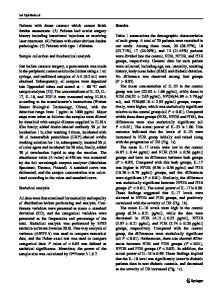Aqueous Humor: Physiology of the Aqueous Humor
Water represents 70 % of an individual’s body weight and is divided in two compartments, separated by the cell membrane. Inside the cell membrane is the intracellular fluid, corresponding to 50 % of the body weight, and outside it the extracellular fluid,
- PDF / 610,334 Bytes
- 13 Pages / 504.57 x 720 pts Page_size
- 12 Downloads / 370 Views
Aqueous Humor: Physiology of the Aqueous Humor
6.1
Contents 6.1 6.2
The Aqueous Humor, Transcellular Fluid ....................................
85
Physical, Chemical, and Physiologic Concepts That Help to Understand the Formation of the Aqueous Humor .....
86
6.3 6.3.1 6.3.2 6.3.3
Formation of the Aqueous Humor ........... Ultrafiltration ............................................... Secretion ...................................................... Diffusion ......................................................
87 87 88 89
6.4
Hemato-ocular Barrier ..............................
90
6.5
Modifications of the Blood-Aqueous Barrier......................................................... Direct Mechanisms ...................................... Indirect Mechanisms ....................................
92 92 92
Regulation of the Formation of Aqueous Humor .........................................................
92
6.7
Measurement of Volume/Minute ..............
93
6.8 6.8.1 6.8.2
Biochemistry of the Aqueous Humor ....... Physical Properties ....................................... Chemical Composition ................................
94 94 94
6.9
Summary.....................................................
95
References .................................................................
96
6.5.1 6.5.2 6.6
The Aqueous Humor, Transcellular Fluid
Water represents 70 % of an individual’s body weight and is divided in two compartments, separated by the cell membrane. Inside the cell membrane is the intracellular fluid, corresponding to 50 % of the body weight, and outside it the extracellular fluid, corresponding to the remaining 20 % (in the adult). There are two parts to the extracellular fluid, one circulating which is found inside the blood vessels, called intravascular fluid or volemia, and the other constituting the fluid medium bathing the cells, or transcellular fluid, which is separated from the vascular by the capillary membrane. The former is 5 % of the body weight and the latter 15 %. The ocular globe weighs 10 g. 7.5 g of these represent the total water it contains. These 7.5 g of water is 1/1,400 of the transcellular fluid. The water in both eyes, that is, 15 g, is thus 1/700 of the transcellular fluid and is represented as the smallest black rectangle in Gamble’s diagram (Fig. 6.1); the other larger rectangle represents the 150 g of cephalorachidian fluid. The aqueous humor of the anterior and posterior chambers represents 5 % of the total water in the ocular globe, that is, 0.375 or 0.750 g in both eyes, which is 1/14,000 of the transcellular fluid. This minuscule amount could be represented by just a dot in Gamble’s diagram. This smallness in quantity is compensated by the fact that it is the only part of the organism in
R. Sampaolesi et al., The Glaucomas, DOI 10.1007/978-3-642-35500-4_6, © Springer-Verlag Berlin Heidelberg 2014
85
6
86 Blood plasma
Aqueous Humor: Physiology of the Aqueous Humor
5%
Aqueous humor = Transcellular fluid Na
15 %
6.2 70 % H2O
Intracellular
Data Loading...











